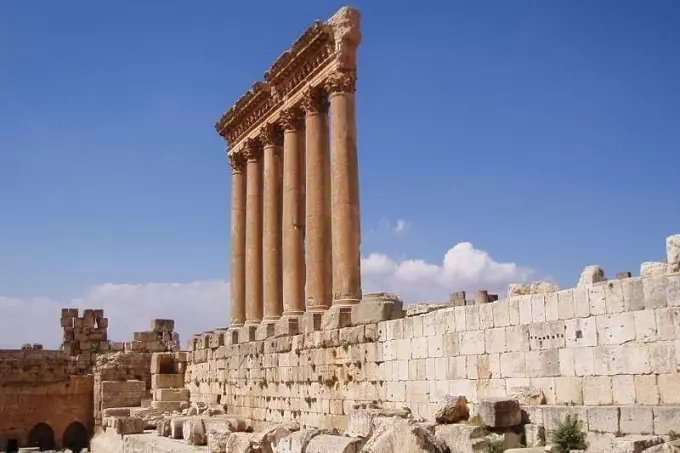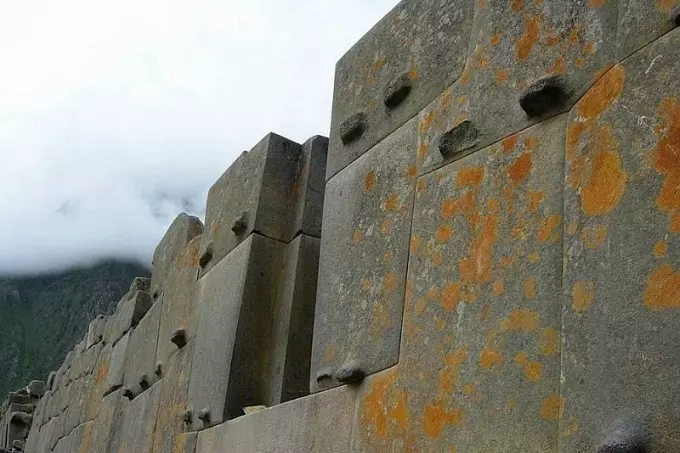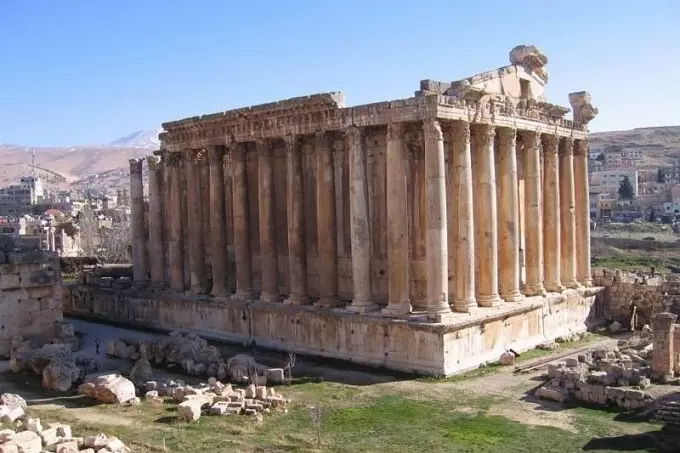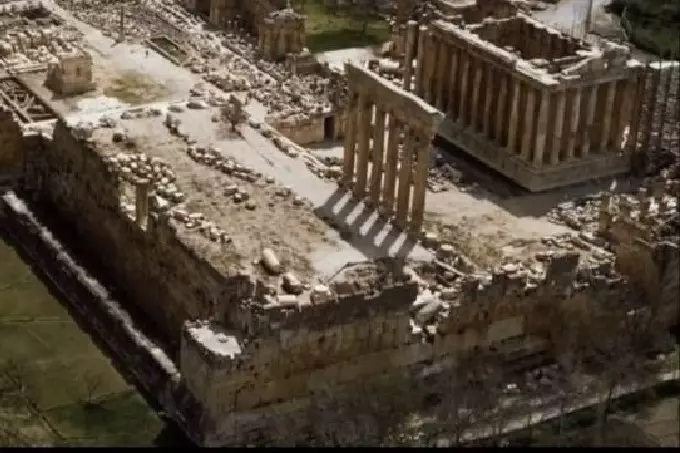Who built Baalbek and why?

Time is relentless. It indifferently erases the traces of great civilizations, turning into ruins the magnificent creations of the masters of antiquity. Covers the glory of ancient, powerful kingdoms with the sand of oblivion. Baalbek was once considered a sacred city, and its temples were among the wonders of the world.
Alexander the Great visited the Baalbek sanctuary, bringing great gifts and asking for help and success in his campaigns from the god Jupiter, whom he revered as a father. Today it is just an excursion object. But his riddle is one of the most intractable.
Baalbek (Balbek, Baalat, Greek Heliopolis) is probably the oldest known city. Currently, it is almost completely destroyed. The ruins are located in the Bekaa Valley (Lebanon), at the foot of the Anti-Lebanon Mountains, 53 miles northeast of Beirut.
The temple of Jupiter makes the greatest impression on the tourist. Time, wars and the most powerful earthquake of 1759 did not spare the building. However, even what remains gives an idea of the scale of the temple, next to which the Athenian Parthenon would look like a child’s toy.

The building of the main temple in the depths of the large courtyard was a rectangle 89 meters long and 49 meters wide, the roof of which rested on 54 Corinthian columns, forming a peristyle (Peristyle is a rectangular square surrounded on four sides by a covered colonnade).
Of these columns, only six have been preserved at present, having approximately 7.7 meters in circumference and a rod 19.8 meters long, and together with a pedestal — 24 meters; the rest is miserable wreckage covering the entire area occupied by the ruins with an area of about five square kilometers.
However, the attention of historians is attracted not so much by fragments of a Roman building (dating back to about the III century BC), as by the foundation on which the temple complex rests — a cyclopean structure created long before the arrival of the peoples known to us in Lebanon.
It consists of stone blocks. There are nine rows of them in the southeastern wall of the temple foundation. Each block measures approximately 11 x 4.6 x 3.3 m and weighs over 300 tons, respectively.
At the same level, in the adjacent southwestern wall, there are six more 100-ton stones, on top of which lie three giant megalithic blocks, called the Trilithon, or the Miracle of Three Stones. Three granite blocks of the Trilithon form the sixth visible row of the masonry wall. Each of these gigantic stones reaches an average of 21 meters in length, 5 meters in height and 4 meters in width. They weigh 800 tons each!
Michel Alouf, a former keeper of Baalbek, wrote: “… despite their grandiose size, they (the Trilithon stones) are so neatly folded and so precisely connected to each other that it is almost impossible to put even a needle between them. No description can give an accurate idea of the amazing impression that the sight of these giant blocks makes on the observer.”

A few hundred meters to the south of the ruins of this complex, there is a billet of another stone colossus (“Southern Stone”) measuring 21.5 x 4.8 x 4.2 m, weighing more than 1,000 tons and with a volume of 433 cubic meters. Some researchers explain his presence by the fact that the construction of Baalbek was not completed.
Who, when and for what purpose erected this grandiose platform? And how did the builders cope with moving and fitting multi-ton blocks because even modern technologies are only getting closer to solving similar problems?
The answer should be sought in the distant past, in the times when the fortress of Baalbek was built. However, apparently, we are talking about such antiquity that more or less reliable information has not reached our days. Only legends and legends remain…
According to Arabic legend, Baalbek belonged to Nimrod, who once reigned in this part of Lebanon. An Arabic manuscript found in the ruins of the city says that Nimrod sent giants to rebuild Baalbek after the Flood.
And the patriarch of the Maronite community of Lebanon, Estefan Doveygi, cited a fragment of a legend that says that the city was built by Adam’s son Cain to hide from Divine wrath (he also named the date of the foundation of Baalbek – 133 years from the creation of the world). Cain populated the city with giants, who subsequently suffered punishment (Flood) from God for their iniquities.
There is also a hypothesis according to which Baalbek was built (or restored) by the Egyptians. This opinion is shared, in particular, by the historian M. Elauf. He writes that the Egyptian temple in Baal-Ged (the ancient name of Baalbek) was restored by Egyptian priests after an earthquake during the conquest of Syria by Egypt.
The fact that the temple of the Sun in Baalbek was erected by Egyptian priests was claimed by the Roman writer Macrobius (5th century AD). He noticed a similarity between the statue of the god Osiris in Baalbek and the statue of Osiris, which was transported by sea from Egypt.
This version is indirectly confirmed by the fact that the Egyptians used giant stone blocks (although somewhat smaller) in the construction of pyramids. However, all these data speak not so much about the fact that Egyptian priests built Baalbek as about the similarity of the techniques used by the ancients (after all, judging by the legends, Baalbek is older than the Egyptian civilization, so the Egyptians could have been students of those who built the platform).

Attempts to reconstruct the ancient technology have been made repeatedly both in Baalbek and in other places where giant stones were used to build mysterious structures. So far, none of them has been successful. Garcilaso de la Vega says that one of the Inca kings, wanting to strengthen his reputation, gathered 20 thousand people and told them to lift one of the huge stones up the mountain (there had been a structure made of the same blocks on the mountain since time immemorial).
The case ended in tragedy – a huge stone fell off, and thousands of people were killed. Perhaps the fact is that the wrong technique of moving stones was chosen.
To date, there are several assumptions about the method of transporting giant blocks. The first method – moving stones on special stone or wooden rollers – was rejected as a result of calculations. It turned out that the rollers were destroyed with much less effort than is required to lift the blocks.
The second method, which assumed the existence in ancient times of huge working animals (similar to modern elephants, but much larger), was rejected by biologists: so far, no skeleton of such a creature has been found.
The third method – the movement of stones on the principle of “pull-push” using a special rhythm – could possibly explain how the stones were delivered to the construction place. But it is impossible to fit them to other blocks in the masonry (or at least just raise them to the desired height) in this way.
Supporters of the fourth method (let’s call it fantastic) proceed from the fact that the ancients had access to many skills that are hopelessly lost at the present time. The stones could easily be put in place by teleportation. As proof, supporters of the hypothesis cite the legend of Merlin’s delivery of stones for Stonehenge by air.
It should be noted that there are not so few structures in the world whose appearance (and often functions) does not find a rational explanation. For example, not far from the town of Tiahuanaco (the southern shore of Lake Titicaca, the Bolivian Plateau), huge boulders were discovered that could be compared in size with Baalbek.
The legend explaining their appearance is also connected with the giants, who allegedly built the structure overnight after the Flood.
There are a number of similar structures in Peru. One of them, Ollantaytambo, is located 40 miles northwest of Cuzco. Above the walled terraces of Ollantaytambo rises a mysterious building called the Temple of the Sun. The pediment of this temple is composed of six huge monoliths. The height of the largest stone is more than 13 feet (4.3 m).
These are absolutely unique stones – with rectilinear side faces and extraordinary ribs. The accuracy of their fitting to each other is comparable to that used in Baalbek. The same technique was used in the construction of the Egyptian pyramids.
The weight of the stones involved in the construction varies from blocks of limestone of 2-2.5 tons to huge granite monoliths of 50-70 tons. These grandiose granite blocks were brought here from quarries in Aswan, located six hundred miles (about 1000 km) to the south.
The question of the purpose of all these structures is still open. Some researchers suggest that the same civilization is behind the construction of all megalithic structures. It had a high technological level but remained unscripted.
In addition, supporters of this hypothesis claim that this civilization had an extraterrestrial origin. And buildings like Baalbek played the role of lighthouses and landing pads for spaceships.

The researchers argue their hypothesis as follows: first of all, almost all civilizations have a myth that the gods taught people the basics of crafts, gave them writing, mathematics, etc. Also, many peoples preserve legends about places where gods once lived (usually the oldest temples are located in these places).
Finally, the information embedded in megalithic structures is mainly of a “cosmic” nature, and some elements of the preserved knowledge (for example, the complex system of time counting among the Incas and Maya) are not applicable to everyday life. In addition, a number of cultures (in particular in Egypt) have a sudden technological breakthrough, which cannot be explained by the gradual accumulation of knowledge.
There are also more “mundane” versions explaining the purpose of Baalbek and similar structures. Researcher Volney reports one of the legends where it says: “This building was only erected in order to store priceless treasures in its underground vaults, which should still be there now.”
Indeed, there is a whole network of underground passages under Baalbek. Some of them are supposed to have been associated with palace buildings, others with tombs. It is likely that some of them were used as a treasury. In the vicinity of Baalbek, gold, silver, raw materials for the production of copper, and many other minerals were mined, large deposits of which still exist today.
So there was something to fill the caches with. The dungeons are still not fully explored. Perhaps jewelry will be found in them or maybe – historical materials that will shed light on the past of the oldest city in the world…




